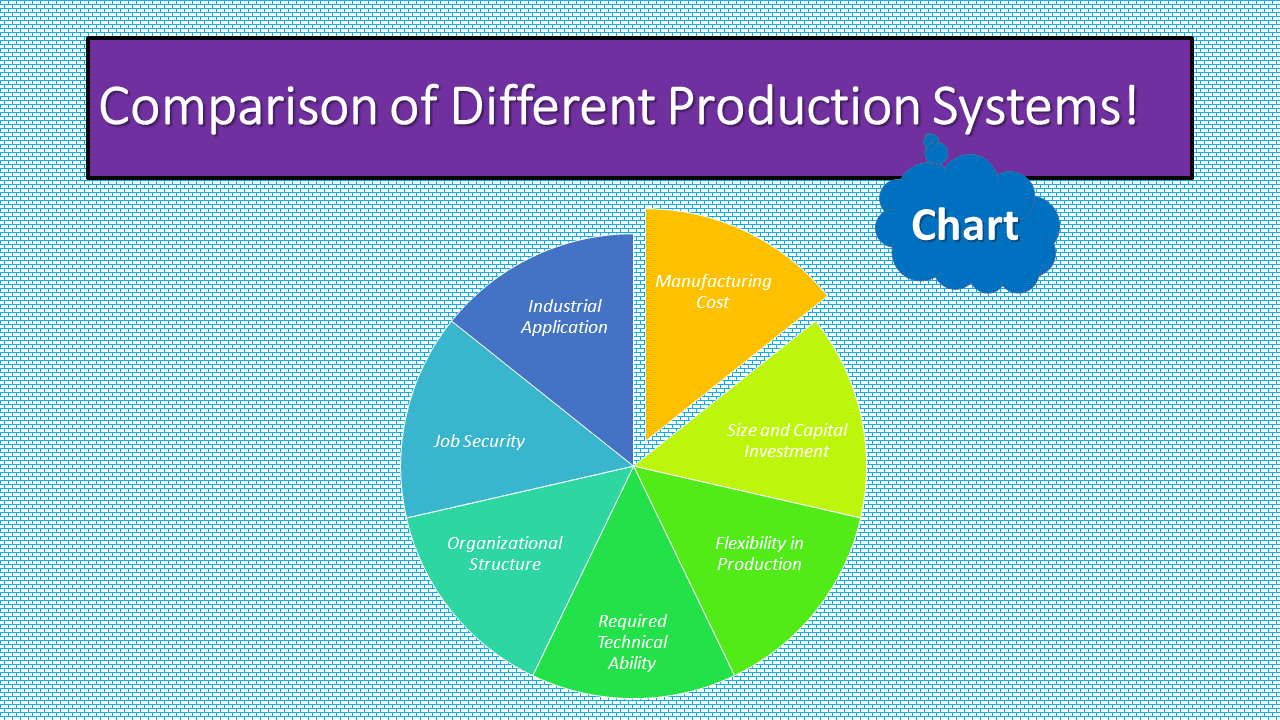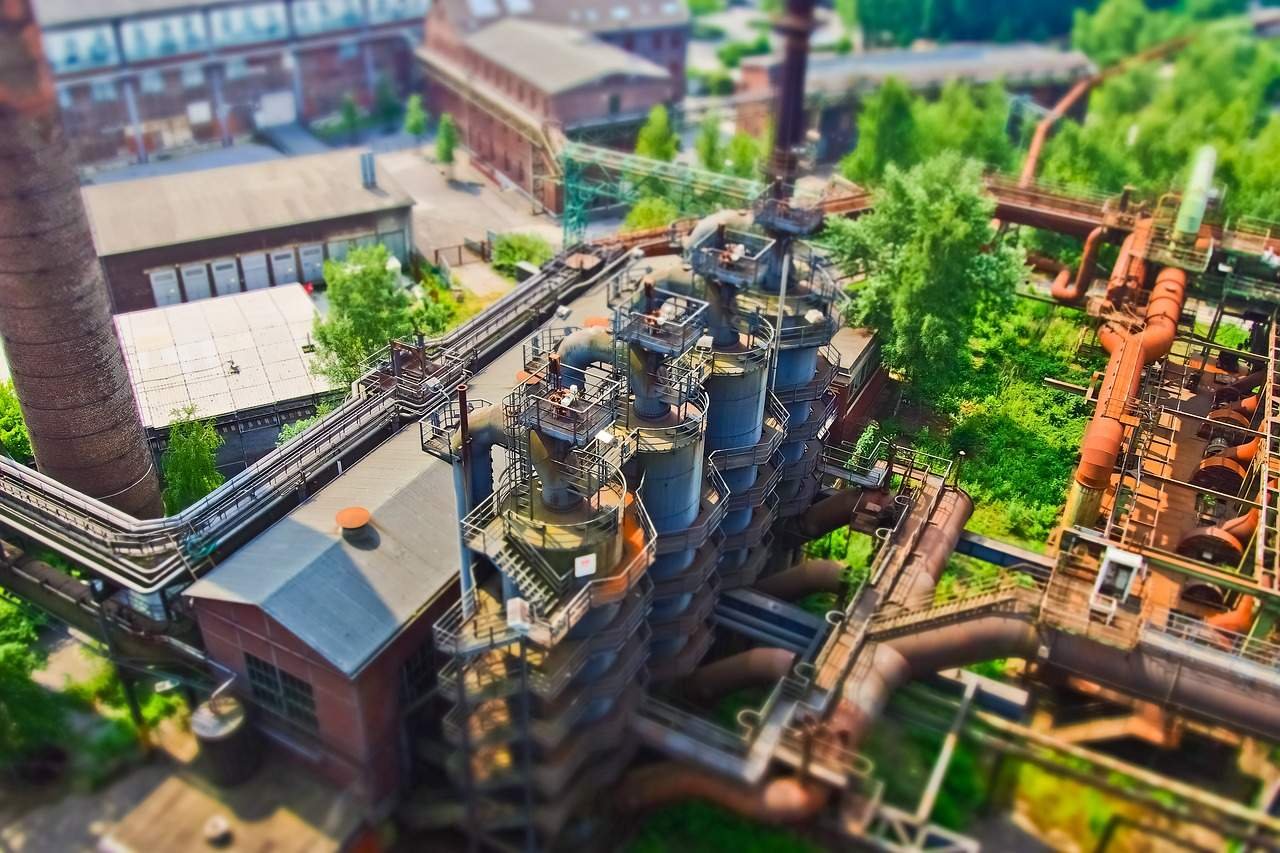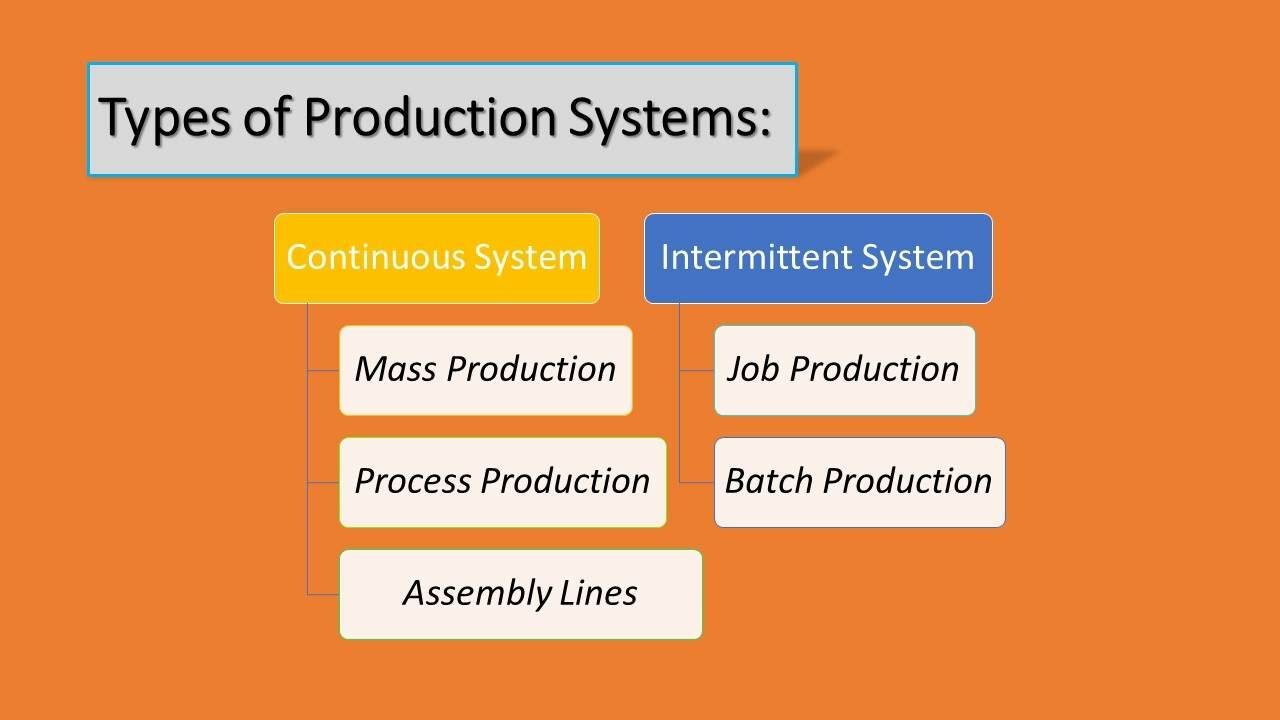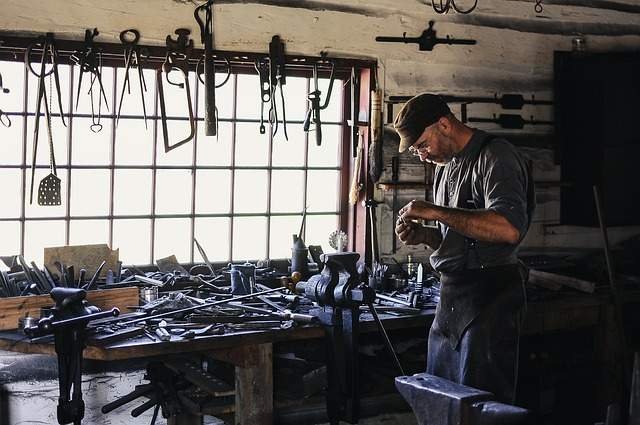Comparison of Different Production Systems; The system relies on a number of important factors like policies of the organization, Types of Production Systems, size of production, etc. However, production methods, organization, activities, and operations differ from company to company. The production system can classify in the following ways: 1) Continuous or Flow Production, and 2) Intermittent Production System.
Here are explain; How to Comparison of Different Production Systems?
As we have discussed various systems and sub-systems in detail in the above lines, we can now make a comparative study of them as follows;

Manufacturing Cost:
Cost of production per unit is the lowest in-process production while it is highest in job production because large scale continuous production is carried out under process production. Per unit, the cost is maximum in Job production and minimum in-process production. The four methods of production in increasing order of costs can arrange as process, mass, batch, and job. Unit cost in mass production is higher than the process production while it is lower than the batch production or job production.
Size and Capital Investment:
As stated earlier, the scale of operation is small in job production, medium in batch production, large in mass production and very large in-process production. Hence the size of capital investment differs from system to system. Process production calls for higher investment while mass production requires a lesser amount of capital investment. It is lower in case of job production and comparatively higher in batch production. Extra explain each of them;
- Capital Investment: The requirement of capital varies according to the nature of the product and the input needs. The systems in ascending order of capital investment can be arranged as a job, batch, mass, and process.
- Size of Plant: In job and batch system the same equipment/machine can perform a number of operations to manufacture different type of items. So the size of the plant is likely to smaller than those for mass and process system where the whole production process is to strictly arrange in a predetermined sequence of operations.
Flexibility in Production:
In case of a change in demand for the product, the production facilities may adjust very shortly without increasing much expenses under the system of job or batch production. But both the sub-systems of continuous production system i.e., mass production or process production employ single-purpose machine in their manufacturing processes. Job and batch systems can easily adjust to changes in the requirement of the consumer with incurring any heavy expenditure.
But in the case of mass and process systems we can produce one single product and with the change in demand of products the systems cannot adjust easily. Thus job-batch system using general-purpose machines is more flexible than a mass-process system using single-purpose machines. They cannot adjust their production facilities so quickly and easily as is possible in job or batch production where general-purpose machines are using.
Required Technical Ability:
Both job and batch production requires high skilled technical foreman and other executives. Highly skills labor is required in job and batch production to operate and carry out specializes work on machines. In the case of mass and process systems, semi-skilled persons can also operate the machines.
But due to the large scale of production, more managerial skill is requiring in continuous systems. Under mass production for process production systems, managerial ability plays an important role because it requires the higher ability for planning and coordinating several functions in mass and process production than in the case of job and batch production.
Organizational Structure:
A mostly functional organization is adopting in case of job and batch production systems. In job and batch production generally functional organizational approach is adopting whereas divisional organization pattern is using in mass and process systems.
There is decentralization concept in organization of job and batch whereas centralization is prominent in mass and process systems. On the other hand, the divisional organization is preferred in mass and product process production systems due to the greater emphasis for centralization.
Job Security:
Job and batch systems of production do not provide. Any type of job security to workers due to their intermittent character. During odd times, workers particularly upskilling workers are thrown out of a job. On the contrary, mass and process production systems provide greater job security to workers. Because production operations are carrying out continuously in anticipation of stable and continuous demand of the product.
Job and batch systems produce items only when orders are receiving. During slack periods when there is no or very little demand workers are likely to sack. Job security is the probability that an individual will keep his/her job; a job with a high level of job security is such that a person with the job would have a small chance of losing it. Thus, there is less job security in Job-batch production systems. In mass and process system, items are manufacturing for stock and so production is continuous. Due to this, there is more job security for workers.
Industrial Application:
The application of different systems is suitable in different industries depending upon the nature of work. The mechanism of job production applies in products of construction and manufacturing industries like buildings, bridges, special purpose machines, etc.
Batch production is mostly using in mechanical engineering and consumer-goods industries like cotton, jute, machine tools, shoe-making, etc. Mass production is found in automobiles, sugar refining, refrigerators, electrical goods, etc. Process production is most appropriate in chemical, petroleum, milk processing industries, etc.

Thus, a comparative view of the different systems of production reveals. That no one system is suitable for all types of industries. And, therefore, each system is different in itself and must be studied with reference to the nature of the industry.












